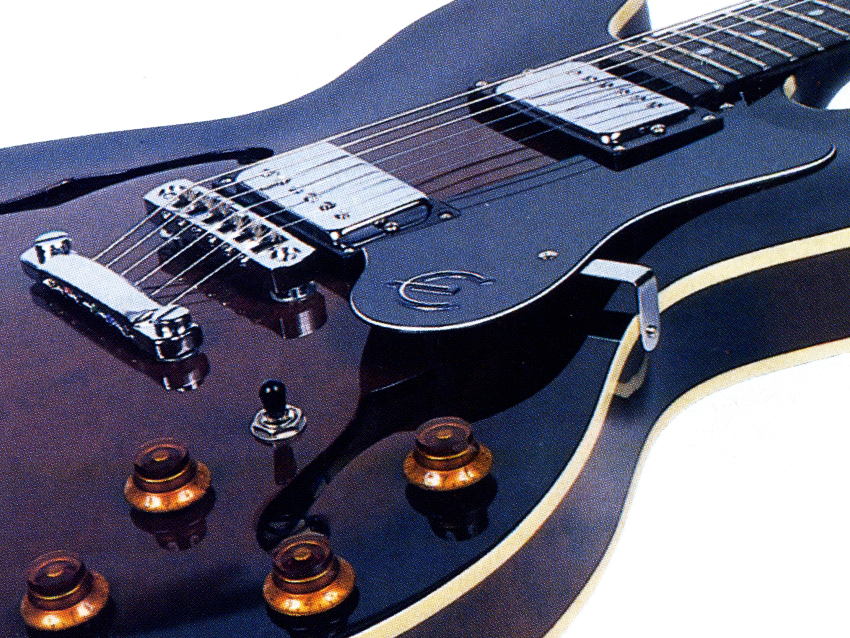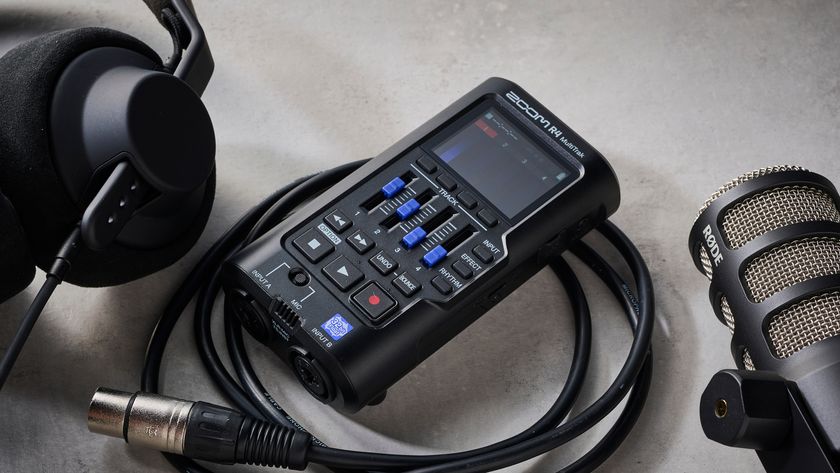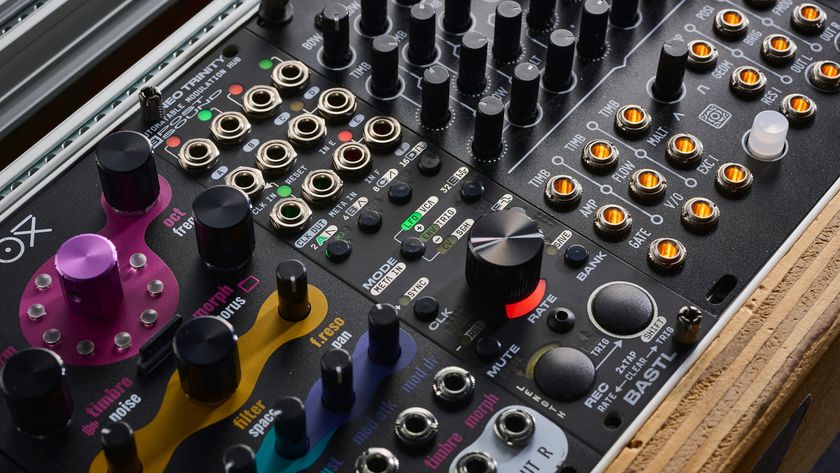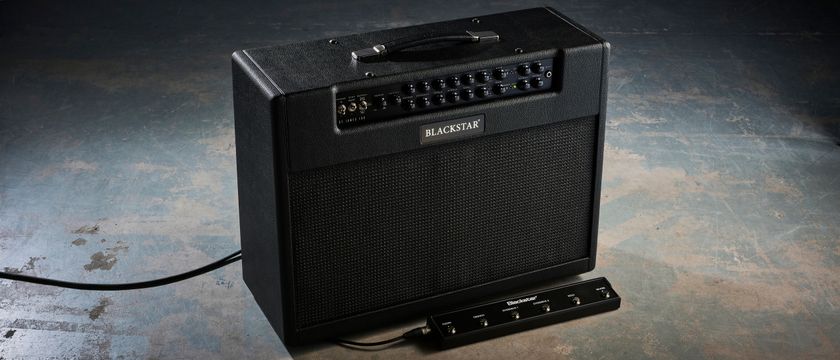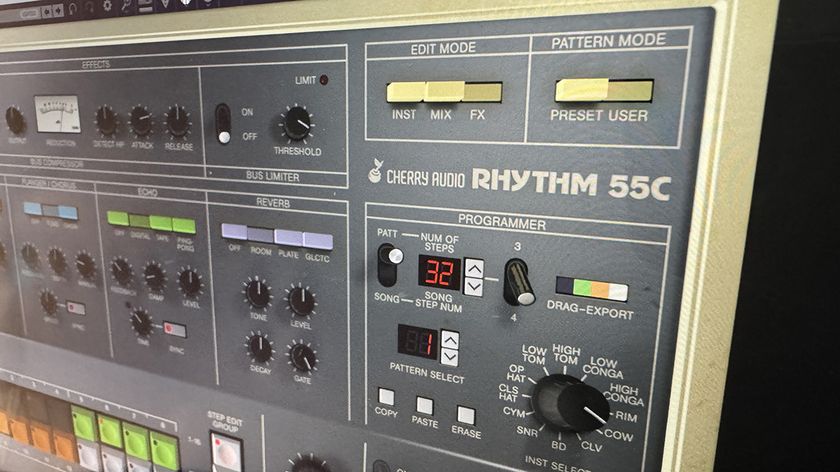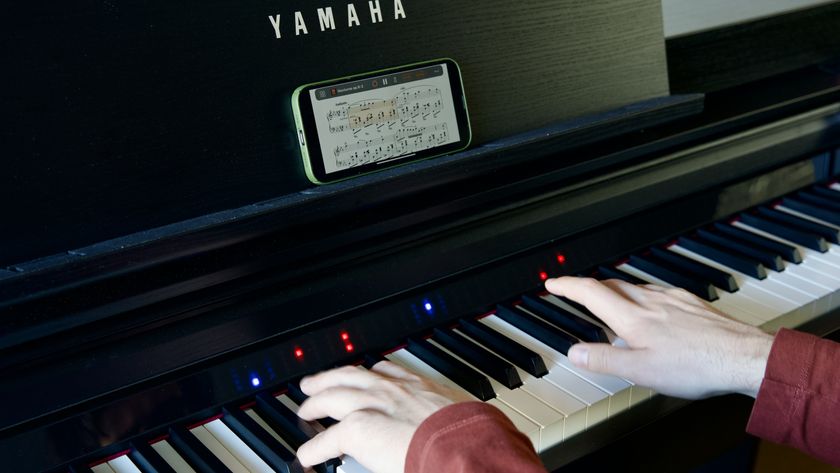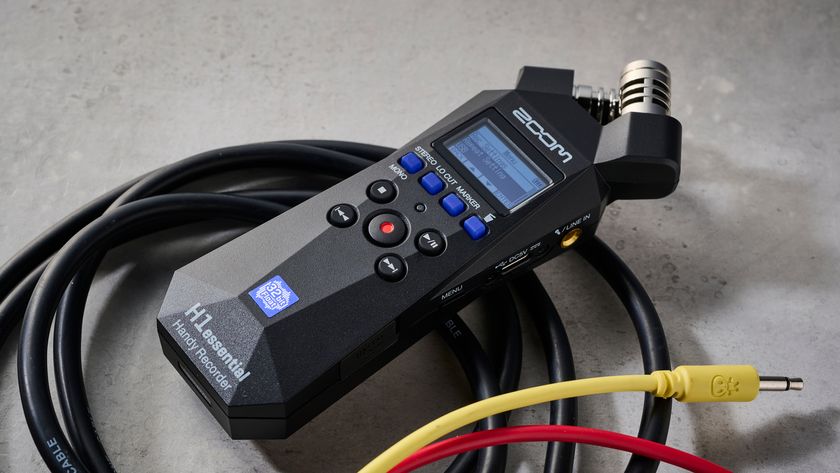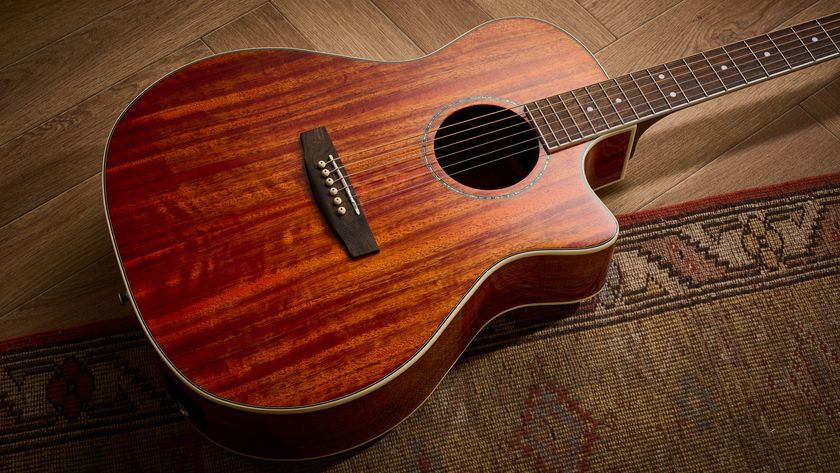MusicRadar Verdict
If you fancy a no-nonsense semi with more than a whiff of background and expertise, cast your eyes in Epiphone's direction. The Dot is a gem.
Pros
- +
Well-built and cool-looking. Versatile with very usable tones.
Cons
- -
It's not a 'real' Gibson.
MusicRadar's got your back

Epiphone ES-335 Dot

Epiphone ES-335 Dot

Epiphone ES-335 Dot

Epiphone ES-335 Dot
Epiphone's 'plenty of guitar for sensible money' philosophy means you can get your hands on a well-constructed, professional instrument without selling your vital organs for medical research. And the thinline semi-acoustic range is no exception.
Near the beginning of that range is 'The Dot', based on the timeless and legendary Gibson ES-335.
Build quality
"The cost cutting measures are the right ones, as they affect neither the playability or sound to any great extent"
Pulling the Dot from its box, you're greeted with a solid and weighty feeling guitar that points reassuringly towards good, sturdy construction. In this respect, the term semi-acoustic is a slight misnomer, as it is, in fact, semi-solid.
When Ted McCarty designed the Gibson ES-335 back in 1958, he included a solid piece of mahogany through the centre section, just wider than the pickups and surrounds, to improve sustain and help eliminate feedback. This feature has been retained on Gibson and Epiphone thinline semis to this day, although in this case it's made of maple.
While we're on the subject, this is the one constructional area of the Dot that obviously reveals its budget constraints. The arched, inside-back doesn't marry exactly with the straight, solid block, revealing small gaps along its entire length.
If you want to know why a Gibson ES-335 costs over a grand more, you'll find some clues by looking here. Instead of plinking the block straight on top of the back, a Gibson's arched back is filled with thin strips of wood, then planed flat. That said, it doesn't affect the external appearance, and it isn't audibly detrimental to the sound of this Epi.
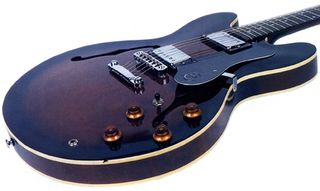
The cream, plastic edgebinding is neat, looking suitably 'yellowed' and authentic against the vintage sunburst finish. The cleanly applied finish is flat and consistent, save for some lacquer build on the inner edges of the f-holes. These areas would benefit from more careful finishing, yet bear in mind that this guitar costs less than £400, not £1400-plus.
To these eyes, vintage sunburst isn't the most attractive option, as it appears slightly abrupt where the dark brown turns to black. If you fancy something different, Epiphone also offers heritage cherry sunburst, cherry, ebony and natural as options. The Dot's fixed neck is finished in vintage sunburst, too, perhaps disguising the fact that it's made of maple.
The joint certainly looks and feels solid enough to withstand years of faithful service, as does the scarfed joint under the first and second fret securing the headstock. In this case, Epiphone opts for the thinner, elongated design and scripted logo, all adding to the Dot's charming vintage character.
If you're still wondering why it's called the Dot, look at the rosewood fingerboard. In between the 22, well finished, medium frets lies the primary reason why vintage Dot-neck 335s are worth so much more than their block-inlayed brethren.
Until now, modern Epis such as the Casino, Sheraton and Supernova only came with block inlays. It's all a matter of taste, but we love the simplicity and function that dots breathe over the guitars they adorn.
The hardware is chrome plated, which won't tarnish as nicely as nickel, but again, its down to cost. There are two Epiphone design, Korean humbuckers, a tune-o-matic bridge and stop tailpiece and a set of modern-looking machineheads.
Playability
We've heard many players say they didn't think they'd get on with a big semi, because they're too, er, big. Our advice is: go and play one! The body isn't much fatter than a Strat, for example, and standing or sitting, the Dot feels comfortable to hold and play.
The neck, while by no means clubby, feels substantial in your palm, probably due to the 43mm width at the nut. Its slightly flattened C-profile increases marginally in depth further up the neck, making for a suitably vintage feel.
As this Dot arrived with a set of heavy-gauge strings, complete with a wound third, we wondered if Epiphone sees this as one for the jazzers? Let's hope not, because as good as it is for that style, this is a much more versatile instrument.
The action is near perfect; not too high to make complicated runs a problem, not too low to be detrimental to the tone. Intonation, too is good, although swapping for some lighter strings, the plain third required a slight adjustment to make it ring in tune all over the neck.
One aspect often overlooked on cheaper guitars is the nut. A poorly cut nut causes huge playability problems and frustration, bus as with this Epi's general setup, it's glitch-free and player friendly.
Sound
An acoustic strum issues forth a pleasing, resonant ring. We'd wager that the Dot's all-maple construction has got something to do with that, but more obviously, the hollow bouts bolster the acoustic tone, inducing wry smiles to those listening.
Before plugging in, listen to Ronny Jordan, then Noel Gallagher, then BB King, then George Harrison and John Lennon. It becomes immediately apparent that this style of guitar is hugely versatile.
This Dot is no exception: the pickups, while not packing the punch of the USA PAFs, offer everything form smooth and moody, front-position mellowness to screeching, bridge position rawk.
Played clean, jazzers will love the neck position; roll the tone off a little for instant Wes Montgomery, turn it up for a more defined sound that remains warm throughout.
Adding the tiniest amount of gain - especially if there are valves involved - lets the pickups sing that much more. In this scenario, their relative lack of power is a bonus fore bluesers, throwing an emotive Freddie King-esque hue on proceedings.
The middle position offers a definite 'clang' to the tone, and strummers will find all they need here. Flick to the bridge pickup, pile on the dirty stuff, turn your stack to 10 and the combination of gain and its semi-solid construction transforms the Dot into a monster.
Again, we're not talking mega-output, but to our mind that makes for a much more musical experience. Open position chords a la Gallagher sound massive, while single-note work benefits from that wonderfully satisfying onset of musical feedback. Lovely stuff.
Value for money
So a blonde '59 Dot-neck 335 will set you back around £20,000; a brand-new version of the same, somewhere around £2,000 and this Epi will leave you plenty of change from £300. The cost cutting measures we've mentioned are the right ones, as they affect neither playability nor the sound of this cool guitar to any great extent.
It looks fine, sounds great and plays great. To our minds, that's value for money indeed.
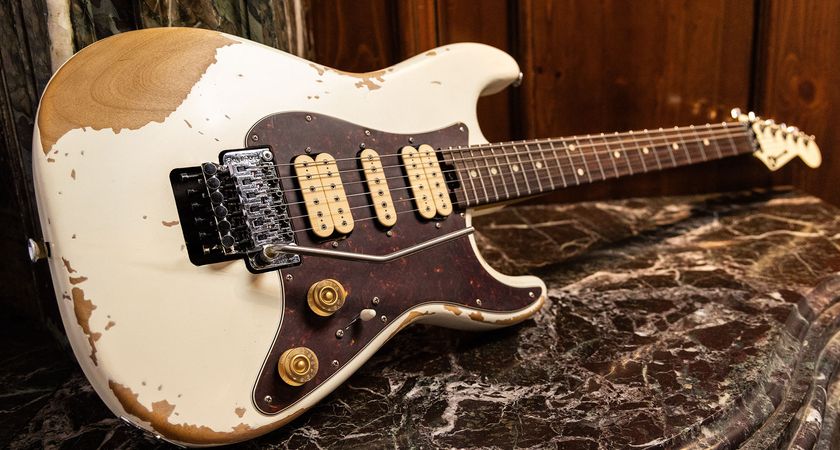
“The look of a road warrior that has many more glorious miles ahead of it”: Charvel’s new limited edition Super-Stock So-Cal Style 1 is a box-fresh hotrodded S-style that looks like it’s got some serious city miles on it
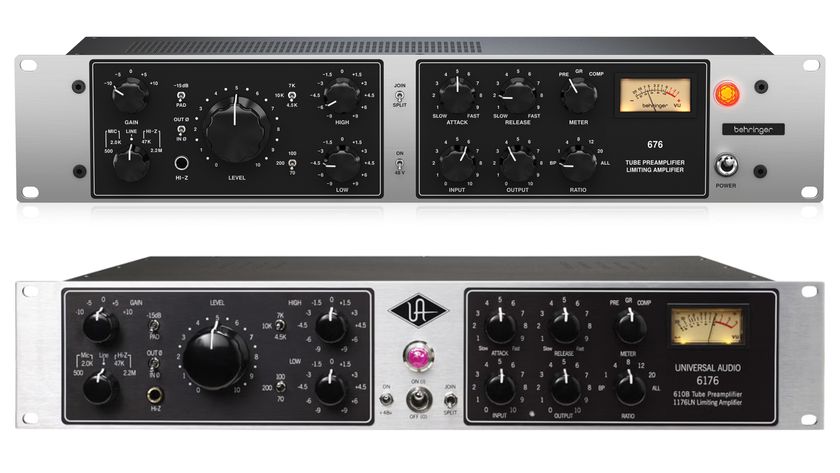
Has Behringer gone too far with the 676, its clone of the Universal Audio 6176?
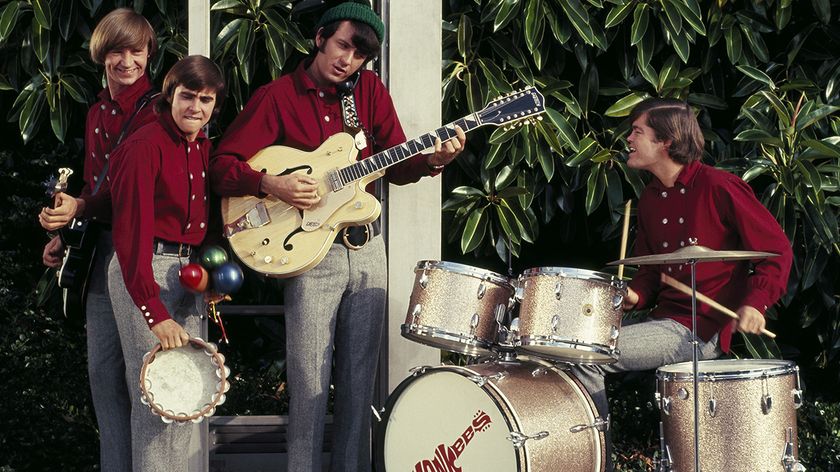
“I didn’t have to learn every rhythm and tempo to be at the standard of a studio musician. I learnt what I had to learn and I think I did pretty well": The Monkees' drummer Micky Dolenz says he had the musical chops that his role required
